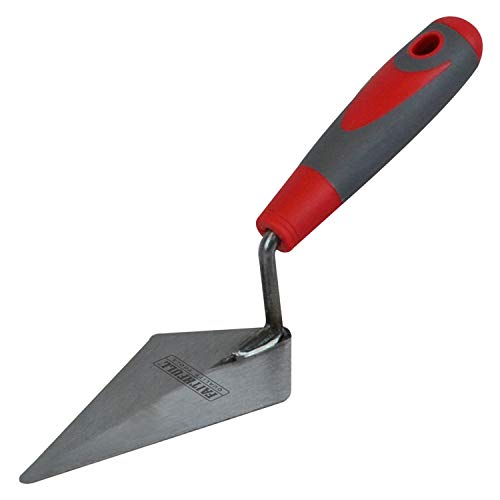Yes, you can use a trowel for drywall!
When it comes to drywall installation and repair, having the right tools is essential. One commonly asked question is whether a trowel can be used for drywall. The answer is yes, a trowel can be used for drywall, but there are some considerations to keep in mind.
The benefits of using a trowel for drywall
Using a trowel for drywall has several benefits. First, it allows for precise control and application of joint compound, also known as mud. This is especially useful when working on small areas or detailed work such as corners or edges. A trowel allows you to easily spread and smooth the mud, creating a seamless finish.
Additionally, using a trowel for drywall can save you time and effort. Trowels are specifically designed for spreading and smoothing materials like joint compound, making the process more efficient compared to using alternative tools such as a putty knife. The larger surface area of a trowel allows you to cover more area with each pass, reducing the number of strokes required.
Choosing the right type of trowel for drywall
When using a trowel for drywall, it’s important to choose the right type of trowel for the job. There are a few different types of trowels to consider:
1. Finishing trowel: This type of trowel is specifically designed for spreading and smoothing joint compound, making it ideal for drywall applications. The flat, rectangular blade allows for smooth, even application.
2. Margin trowel: While not typically used for drywall, a margin trowel can be useful for small, detailed work or repairs. It has a narrow, pointed blade that allows for more precise application.
3. Notched trowel: Notched trowels are typically used for applying adhesive or mortar, but they can also be used for applying joint compound to drywall in certain situations. The notches on the blade help create an even layer of compound.
Regardless of the type of trowel you choose, be sure to select one with a comfortable handle that allows for a secure grip. This will make the process more comfortable and reduce the risk of hand fatigue.
Using a trowel for drywall: Tips and techniques
When using a trowel for drywall, there are a few tips and techniques to keep in mind:
1. Start with a thin layer: Begin by applying a thin layer of joint compound to the drywall surface. This will help create a smooth foundation for additional layers, if needed.
2. Use smooth, even strokes: When applying the joint compound with a trowel, use smooth, even strokes to spread the material. This will help create a seamless finish and minimize the need for sanding.
3. Feather the edges: When applying joint compound to seams or joints, be sure to feather the edges to blend them into the surrounding surface. This will help create a seamless finish once the compound dries.
4. Sand as needed: Depending on the desired finish, you may need to sand the dried joint compound to achieve a smooth, even surface. Use fine-grit sandpaper and be sure to wear a dust mask to protect yourself from airborne particles.
The limitations of using a trowel for drywall
While a trowel can be used for drywall, there are some limitations to keep in mind. Trowels are best suited for small-scale applications, such as repairs or detailed work. For larger surfaces or full-scale installations, using a drywall knife or a taping knife may be more efficient.
Additionally, trowels may not be suitable for certain types of drywall textures or finishes. If you are using a textured drywall or applying specialized finishes such as skip-trowel or knockdown, a trowel may not be the best tool for the job. In these cases, it is best to consult with a professional or follow the manufacturer’s recommendations.
In conclusion
Yes, you can use a trowel for drywall. It offers precise control, time savings, and efficiency when applying joint compound. However, it’s important to choose the right type of trowel for the job and follow proper techniques for a seamless finish. Keep in mind the limitations of using a trowel for drywall, especially for larger surfaces or specialized finishes. Overall, a trowel can be a valuable tool in your drywall installation or repair toolkit.






